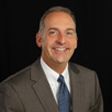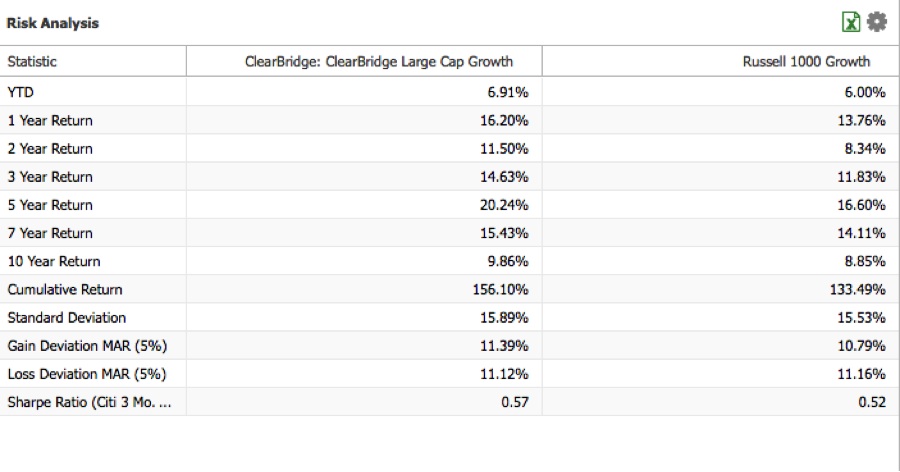4 Steps to Finding the Best Funds for You
It's a big fund universe out there; here's how to narrow down your choices.

In my previous articles, we've discussed the large role that luck plays in investing; creating our individual strategy; and some of the tools we can use to tease out luck from skill. We'll now put those tools to use.
Let's take a look at the large-cap domestic asset class in our hypothetical portfolio. This may be the largest allocation for many Americans, and there are many participants in this space. We could break our allocation into smaller components, and spread our allocation to large-cap U.S. value, large-cap U.S. growth or large-cap U.S. blend. I'd recommend keeping your options open in your initial screen.
Here are four steps to whittle down your options and make the best selection for you:
From just $107.88 $24.99 for Kiplinger Personal Finance
Become a smarter, better informed investor. Subscribe from just $107.88 $24.99, plus get up to 4 Special Issues

Sign up for Kiplinger’s Free Newsletters
Profit and prosper with the best of expert advice on investing, taxes, retirement, personal finance and more - straight to your e-mail.
Profit and prosper with the best of expert advice - straight to your e-mail.
1. Your Initial Screen
First, you have to decide your minimum requirements for a fund. Let's say we want an investment with at least a three-year track history, the same manager at the helm for at least two years and a minimum of $75 million under management.
To screen for funds that meet these requirements, plus whatever other details you'd like to name, I'm partial to the fi360 database, a service provided by the Center for Fiduciary Studies—mainly used by professional advisers. You could start your search by using Morningstar.
Now, let's look for funds that rank highly, with four or five stars over three- and five-year periods on a consistent basis. In my sample search (conducted in October), I'm looking for top quartile funds across a variety of metrics, including alpha, which measures the active return on an investment. My search results in 38 initial qualifying funds out of the entire large-cap domestic stock universe.
The following are at the top of that list:
- First Trust Value Line Dividend ETF (symbol FVD)
- SPDR S&P Dividend ETF (SDY)
- Powershares QQQ ETF (QQQ)
- ClearBridge Large Cap Growth I (SBLYX)
Morningstar classifies the first two as large-value and the next two as large-growth. So your allocation requirement would affect what you might choose here. Let's assume that you have a need for large-growth fund and investigate the Clearbridge option.
2. Deeper Analysis
Let's assume you can actually buy this fund (it is an institutional fund with a high minimum purchase requirement; some custodians allow RIA firms to buy in smaller increments for their clients). Next, you want to take a deep dive into the data. I am going to use another tool typically used by us pros called Evestment. You could find most of this data on Morningstar and Google Finance.
Here are some basic statistics (all fund data is as of September 30, 2016):

Looks promising so far! Let's look at some additional information, such as alpha, tracking error (deviation of the fund's prices from the benchmark's prices) and excess returns (how much better the fund performs—or not—compared with its benchmark):

There is a pretty consistent record of alpha-generation, significant tracking error and returns consistently in excess of its benchmark. Not only that, the management team seems to meet our experience and tenure requirements:

3. Check the Company Filings
Visit the firm's website, where you can gain a wealth of additional information, including management and analyst commentary, top holdings, philosophy and strategy, expenses and more.
In the commentary of the Clearbridge fund, you can see that the current sector allocations are heavy on information technology, health care and consumer discretionary holdings with 66% of the portfolio in those three areas. Additionally, the strategy of this fund involves holding a core group of stocks, surrounded by a cyclical bucket and a select bucket of opportunistic holdings. This approach appears to be working for this manager, and it highlights where skill and process may have a positive impact on results.
As an investor, you need to be comfortable with the future of this strategy. Comfortable enough to forgo an indexing or low-activity approach in favor of this perceived skill.
4. Evaluate Costs
This fund charges between 0.81% and 1.11%, based on share class. Assuming you can get the lowest cost institutional class, you'll pay the manager 0.81%, which will be a potential drag on your returns.
You have to evaluate whether this fee is worth it. Compare the returns on this fund with its benchmark, the Russell 1000 Growth index (returns are reported net of fees). Considering that the iShares Russell 1000 Growth ETF (IWF) has an expense ratio of 0.20%, the added cost to buy the Clearbridge fund is 0.61% to 0.90%. Will it be worth it? Judging from the history and statistics, perhaps. Going back to 1997, the Clearbridge fund has shown excess returns of at least 1.07% in every year except six. So in 14 out of 20 years, the fund did better than its benchmark. That's a 70% chance, historically.
In conclusion, I hope I've given you some insight into the process you should follow to make an informed selection of an investment for your portfolio. The process is similar, but with many additional variables when looking at individual stocks and bonds.
If you are not inclined to do this work yourself, then either hire a reputable fee-only fiduciary adviser to help you or simply choose low-cost index funds. If you aren't in the investment business full-time, using index funds takes a lot of variables out of the equation, so that you can concentrate on your overall diversification strategy, cash flow, etc.
Doug Kinsey is a partner in Artifex Financial Group, a fee-only financial planning and investment management firm based in Dayton, Ohio.
Profit and prosper with the best of Kiplinger's advice on investing, taxes, retirement, personal finance and much more. Delivered daily. Enter your email in the box and click Sign Me Up.

Doug Kinsey is a partner in Artifex Financial Group, a fee-only financial planning and investment management firm in Dayton, Ohio. Doug has over 25 years experience in financial services, and has been a CFP® certificant since 1999. Additionally, he holds the Accredited Investment Fiduciary (AIF®) certification as well as Certified Investment Management Analyst. He received his undergraduate degree from The Ohio State University and his Master's in Management from Harvard University.
-
 Is Your Emergency Fund Running Low? Here's How to Bulk It Up
Is Your Emergency Fund Running Low? Here's How to Bulk It UpIf you're struggling right now, you're not alone. Here's how you can identify financial issues, implement a budget and prioritize rebuilding your emergency fund.
-
 Guide to How All-Assets Planning Offers a Better Retirement
Guide to How All-Assets Planning Offers a Better RetirementAn "all-asset" strategy would integrate housing wealth and annuities with traditional investments to generate more income and liquid savings for retirees.
-
 Forget FIRE: Why ‘FILE’ Is the Smarter Move for Child-Free DINKs
Forget FIRE: Why ‘FILE’ Is the Smarter Move for Child-Free DINKsHow shifting from "Retiring Early" to "Living Early" allows child-free adults to enjoy their wealth while they’re still young enough to use it.
-
 Is Your Emergency Fund Running Low? Here's How to Bulk It Back Up
Is Your Emergency Fund Running Low? Here's How to Bulk It Back UpIf you're struggling right now, you're not alone. Here's how you can identify financial issues, implement a budget and prioritize rebuilding your emergency fund.
-
 An Expert Guide to How All-Assets Planning Offers a Better Retirement
An Expert Guide to How All-Assets Planning Offers a Better RetirementAn "all-asset" strategy would integrate housing wealth and annuities with traditional investments to generate more income and liquid savings for retirees.
-
 7 Tax Blunders to Avoid in Your First Year of Retirement, From a Seasoned Financial Planner
7 Tax Blunders to Avoid in Your First Year of Retirement, From a Seasoned Financial PlannerA business-as-usual approach to taxes in the first year of retirement can lead to silly trip-ups that erode your nest egg. Here are seven common goofs to avoid.
-
 How to Plan for Social Security in 2026's Changing Landscape, From a Financial Professional
How to Plan for Social Security in 2026's Changing Landscape, From a Financial ProfessionalNot understanding how the upcoming changes in 2026 might affect you could put your financial security in retirement at risk. This is what you need to know.
-
 6 Overlooked Areas That Can Make or Break Your Retirement, From a Retirement Adviser
6 Overlooked Areas That Can Make or Break Your Retirement, From a Retirement AdviserIf you're heading into retirement with scattered and uncertain plans, distilling them into these six areas can ensure you thrive in later life.
-
 I'm a Wealth Adviser: These Are the 7 Risks Your Retirement Plan Should Address
I'm a Wealth Adviser: These Are the 7 Risks Your Retirement Plan Should AddressYour retirement needs to be able to withstand several major threats, including inflation, longevity, long-term care costs, market swings and more.
-
 High-Net-Worth Retirees: Don't Overlook These Benefits of Social Security
High-Net-Worth Retirees: Don't Overlook These Benefits of Social SecurityWealthy retirees often overlook Social Security. But timed properly, it can drive tax efficiency, keep Medicare costs in check and strengthen your legacy.
-
 Do You Have an Insurance Coverage Gap for Your Valuables? You May Be Surprised to Learn You Do
Do You Have an Insurance Coverage Gap for Your Valuables? You May Be Surprised to Learn You DoStandard homeowners insurance usually has strict limits on high-value items, so you should formally "schedule" these valuable possessions with your insurer.